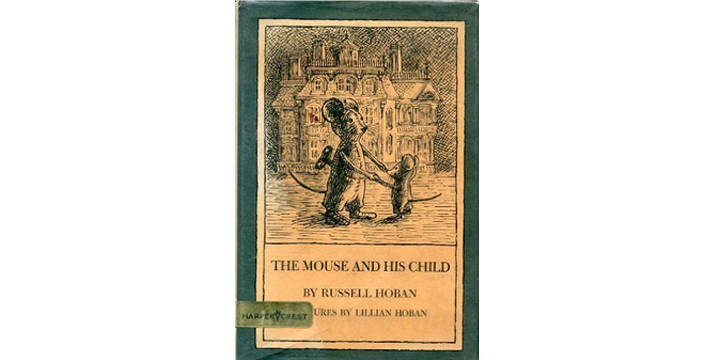I discovered this book when I was under a tremendous amount of stress and flirting with the borders of depression. I was aware of my iffy state of mind and was careful in my choice of books. I didn’t need anything like 1984 or Graveyard of the Fireflies which would surely send me into the abyss with a one-way ticket. I started The Mouse and His Child with caution, ready at any moment to shut the book and send it back unfinished should the story take a downward turn—and it seemed at any moment it might. I have no idea what the author, Russell Hoband, intended, but I was able to finish the book and feel better, much better, at the end than I did at the beginning.
One question I still have is if The Mouse and His Child is a children’s book, a young adult book, or an adult book? The protagonist of the story is a mechanical windup toy of a mouse joyfully holding his child up at the end of outstretched arms. When wound they dance in a circle. This sounds to be a children’s book, doesn’t it? But when they get sent out into the world they don’t find the Hundred Acre’s Wood. Instead they witness the murder of other windup toys, slaughter among warring shrews, and an actor rabbit murdered by a rioting audience during a performance of “The Last Visible Dog.” Speaking of the last visible dog, what lies behind it? The philosophy in this book can go as deep as you want it to go. So it’s not a children’s book right? I don’t know. I do know I read it to my thirteen year old daughter and she loved it. I know that I, a fifty-five year old man, loved it also.
How does a windup toy survive in a world as dark and dangerous as the one I previously described? That answer to this is the magic of the story. Hoband mixes characters of humans, windup toys, and animals to weave as colorful and imaginative a tale as I have ever read. It is so creative and colorful that you will hardly notice that you are walking a path of familiar themes of faith, struggle, family, and triumph.
The Mouse and His Child is not a recipe book for those looking for a comfort read. I don’t know that this book will develop imagination in a person, but I do know that imaginative readers may find this book fascinating and satisfying on many levels.

